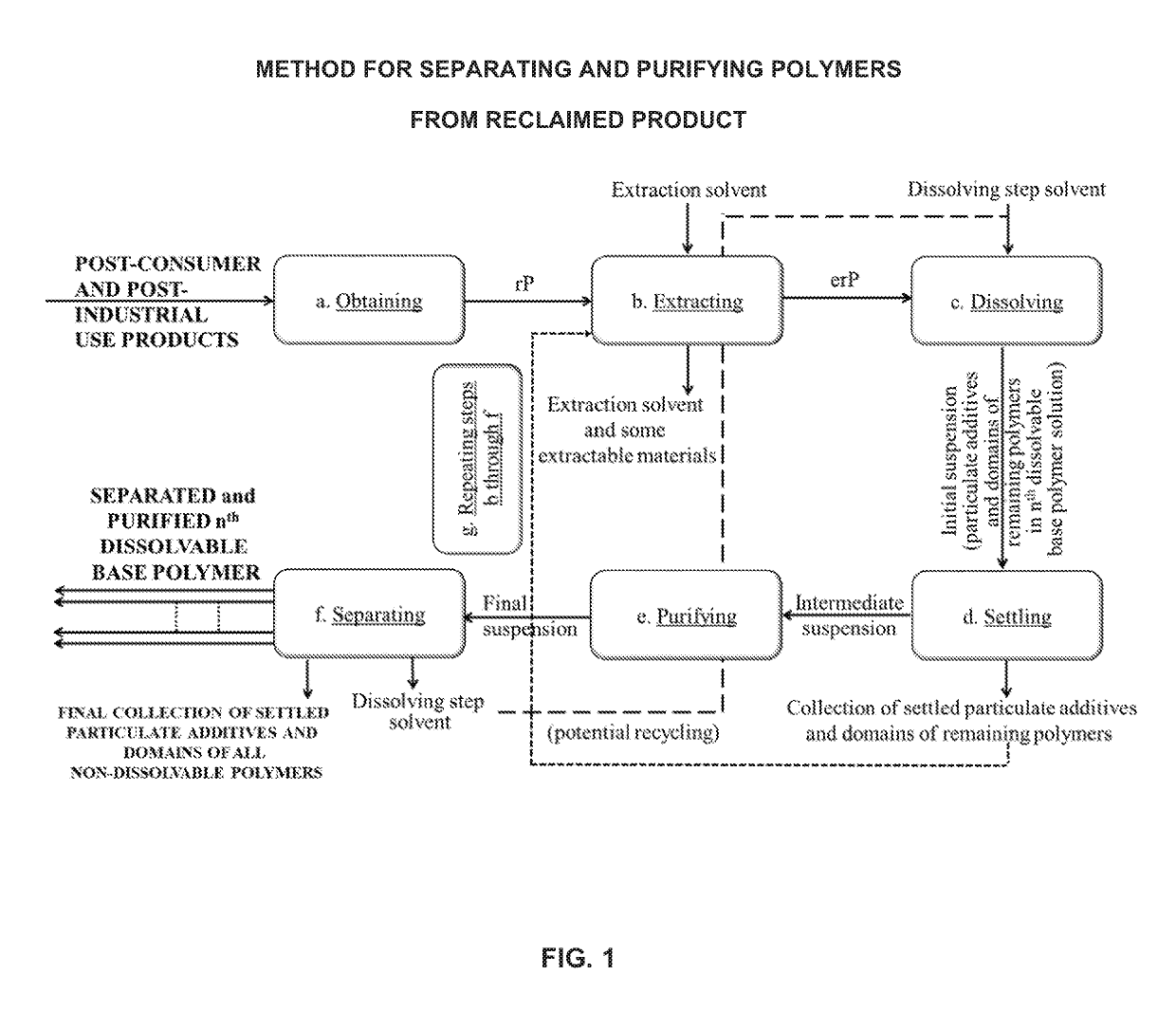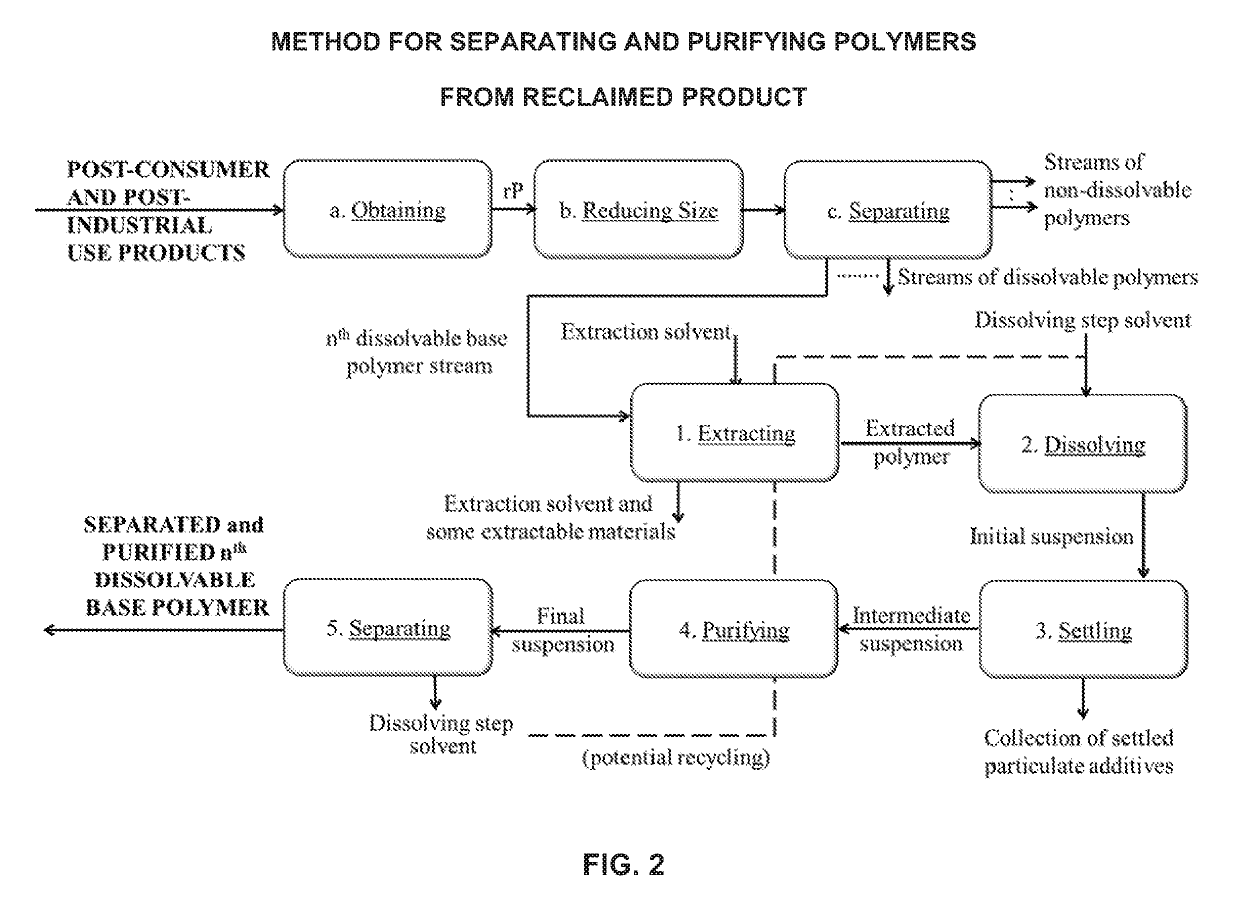Method for separating and purifying materials from a reclaimed product
a technology of reclaimed products and polymers, which is applied in the field of separating and purifying polymers from reclaimed products, can solve the problems of unsightly and potentially harmful to ecosystems, millions of tons of plastic waste generated every year, and the final reprocessed pellets are often highly contaminated with unwanted waste impurities, such as spoiled food residues and residual perfume components, and achieve the effect of reducing the size of said rp
- Summary
- Abstract
- Description
- Claims
- Application Information
AI Technical Summary
Problems solved by technology
Method used
Image
Examples
Embodiment Construction
I Definitions
[0023]As used herein, the term “reclaimed product” (rP) refers to a product used for a previous purpose and then recovered for further processing.
[0024]As used herein, the term “reclaimed film” (rF) refers to a film used for a previous purpose and then recovered for further processing.
[0025]As used herein, the term “reclaimed absorbent hygiene product” (rAHP) refers to an absorbent hygiene product (AHP; e.g. baby diaper, feminine protection product, and adult incontinence product) used for a previous purpose and then recovered for further processing.
[0026]As used herein, the term “post-consumer use product” refers to a product that has been used by the end consumer and disposed of in a waste stream.
[0027]As used herein, the term “post-industrial use product” refers to a product that has been manufactured but not used by the consumer yet, and it is typically a waste product from the manufacturing process.
[0028]As used herein, the term “post-consumer recycle material” (PC...
PUM
| Property | Measurement | Unit |
|---|---|---|
| pressure | aaaaa | aaaaa |
| temperature | aaaaa | aaaaa |
| boiling point | aaaaa | aaaaa |
Abstract
Description
Claims
Application Information
 Login to View More
Login to View More - R&D
- Intellectual Property
- Life Sciences
- Materials
- Tech Scout
- Unparalleled Data Quality
- Higher Quality Content
- 60% Fewer Hallucinations
Browse by: Latest US Patents, China's latest patents, Technical Efficacy Thesaurus, Application Domain, Technology Topic, Popular Technical Reports.
© 2025 PatSnap. All rights reserved.Legal|Privacy policy|Modern Slavery Act Transparency Statement|Sitemap|About US| Contact US: help@patsnap.com


